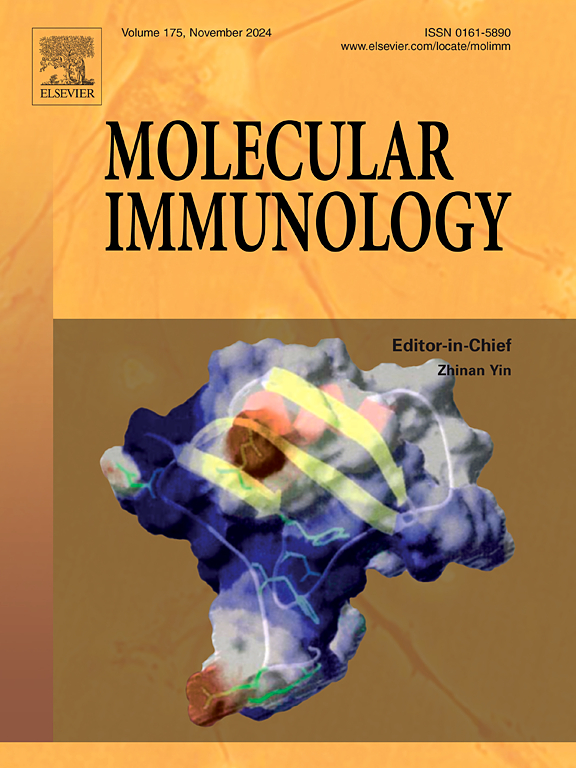Steap3 is a key node in regulating the phagosome escape of Listeria monocytogenes
IF 3
3区 医学
Q2 BIOCHEMISTRY & MOLECULAR BIOLOGY
引用次数: 0
Abstract
Listeria monocytogenes, a foodborne pathogen, poses a significant threat to human health due to its high mortality rate and increasing antibiotic resistance. This study investigates the role of Steap3 in regulating the early phagosomal escape of Listeria monocytogenes. We found that Steap3 expression is downregulated in dendritic and intestinal epithelial cells following infection, and its deficiency exacerbates bacterial proliferation both in vitro and in vivo. Mechanistically, Steap3 interacts with Gm2a and Sting to inhibit Listeria monocytogenes infection. Our results highlight Steap3 as a key regulator in dendritic and intestinal epithelial cells’ defense against Listeria monocytogenes infection, suggesting the Steap3-STING/Gm2a axis is a potential therapeutic target for listeriosis. This study provides valuable insights into the molecular mechanisms underlying Listeria monocytogenes pathogenesis and host immune response, offering new directions for developing anti-Listeria monocytogenes therapies.
Steap3是调控单核增生李斯特菌吞噬体逃逸的关键节点
单核细胞增生李斯特菌是一种食源性病原体,由于其高死亡率和日益增加的抗生素耐药性,对人类健康构成重大威胁。本研究探讨了Steap3在单核增生李斯特菌吞噬体早期逃逸调控中的作用。我们发现Steap3在树突状细胞和肠上皮细胞感染后表达下调,其缺乏加剧了体外和体内细菌的增殖。机制上,Steap3与Gm2a和Sting相互作用抑制单核细胞增生李斯特菌感染。我们的研究结果表明Steap3是树突状细胞和肠上皮细胞防御单核增生李斯特菌感染的关键调节因子,表明Steap3- sting /Gm2a轴是李斯特菌病的潜在治疗靶点。本研究对单核增生李斯特菌发病机制和宿主免疫反应的分子机制提供了有价值的见解,为开发抗单核增生李斯特菌治疗方法提供了新的方向。
本文章由计算机程序翻译,如有差异,请以英文原文为准。
求助全文
约1分钟内获得全文
求助全文
来源期刊

Molecular immunology
医学-免疫学
CiteScore
6.90
自引率
2.80%
发文量
324
审稿时长
50 days
期刊介绍:
Molecular Immunology publishes original articles, reviews and commentaries on all areas of immunology, with a particular focus on description of cellular, biochemical or genetic mechanisms underlying immunological phenomena. Studies on all model organisms, from invertebrates to humans, are suitable. Examples include, but are not restricted to:
Infection, autoimmunity, transplantation, immunodeficiencies, inflammation and tumor immunology
Mechanisms of induction, regulation and termination of innate and adaptive immunity
Intercellular communication, cooperation and regulation
Intracellular mechanisms of immunity (endocytosis, protein trafficking, pathogen recognition, antigen presentation, etc)
Mechanisms of action of the cells and molecules of the immune system
Structural analysis
Development of the immune system
Comparative immunology and evolution of the immune system
"Omics" studies and bioinformatics
Vaccines, biotechnology and therapeutic manipulation of the immune system (therapeutic antibodies, cytokines, cellular therapies, etc)
Technical developments.
 求助内容:
求助内容: 应助结果提醒方式:
应助结果提醒方式:


